Posts Tagged Peter Stamm
BEST BOOKS OF 2020
Posted by Amy Steele in Books on January 4, 2021
I read 87 books this year– 84 by women; three by men; 32 by BIPOC authors. The shortest book I read was Intimations by Zadie Smith. The longest book I read was Goldfinch by Donna Tartt. Here are the best books (5/5*) that were published in 2020 that I read.
Intimations by Zadie Smith
Penguin Books, July 2020. 97 pg.
A slim collection of essays–about aging, community, race, COVID 19, writing– that Zadie Smith wrote during the pandemic. There’s much to consider within these pages of thoughtful, personal and universal essays. She explains: “Talking to yourself can be useful. And writing means being overheard.”
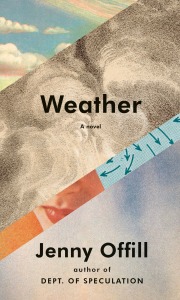 Weather by Jenny Offill
Weather by Jenny Offill
Knopf, February 2020. 207 pg.
fantastic, creative and timely novel addressing the current climate crisis and the impending apocalypse. it’s from the point-of-view of a middle-aged woman –so definitely relatable to me (I want to read more novels about older women). She’s married and has a son. Her brother is a recovering drug addict and she’s had to care for him throughout the years. Jenny Offill excels at this observational narrative. It’s short, riveting, potent. It’s really the perfect thing to read during this COVID-19 pandemic and quarantine we’re all experiencing. Plus it’s quite relatable to middle-aged spinster GenX me: “The woman has just turned fifty. She tells me about her blurriness, the way she is hardly seen. She supposes she is not so pretty anymore–fattish, hair a bit gray. What she has noticed, what gives her a little chill, she tells me, is how if she meets a man out of the context of work, he finds her to not be worth much. He looks over her shoulder as he talks or pawns her off on a woman her own age.”
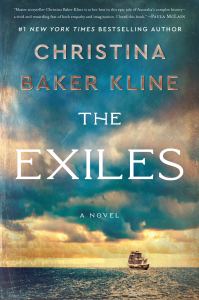 The Exiles by Christina Baker Kline
The Exiles by Christina Baker Kline
Custom House, August 2020. 370 pg.
I loved this amazing work of historical fiction so much and don’t know why I waited so long to write about it! It covers an intriguing aspect of history that I’ve not read much about. Based on actual events, the novel focuses on a ship of female convicts traveling from England to Van Diemen’s Land (Tasmania) in the 1850s. Although Aboriginal people have occupied Australia for thousands of years, the British government views the native people as nuisances and the land to be uninhabited and available for their use. It’s amazing to think about some of the low level crimes for which many were sentenced as well as the harrowing passage. “Evangeline recalled seeing small items in the newspaper over the years about the incorrigibles– men, she thought– transported on convict ships to Australia. Murderers and other deviants exiled to the far side of the earth, ridding the British Isles of the worst of its criminals.” Evangeline is a governess accused of stealing a ring which had been given to her by the family’s older son with whom she’d become romantically involved. She’s well-educated and her late father was a minister. The other staff members didn’t like her. “She was, by temperament, much like her father: diffident, with a shyness often mistaken for aloofness, a bookishness perceived as snobbery.” She’s sentenced to 14 years in prison. She’s pregnant and gives birth to a daughter onboard. Sadly she’s thrown overboard by a crew member who she’d stabbed to protect Hazel, who he’d been sexually assaulting. Hazel is a scrappy convict whose midwife mother taught her many potions and remedies. Mathinna is a native woman who knows how to read and learns to speak French. She’s taken from her tribe by Van Diemen’s governor’s wife on a whim. She considers her a project. It doesn’t work out well. The novel’s a complete page turner and I became so invested in these women I didn’t want it to end.
 Fresh Water for Flowers by Valerie Perrin
Fresh Water for Flowers by Valerie Perrin
Europa, June 2020. 476 pg.
“My closest neighbors don’t quake in their boots. They have no worries, don’t fall in love, don’t bite their nails, don’t believe in chance, make no promises, or noise, don’t have social security, don’t cry, don’t search for their keys, their glasses, the remote control, their children, happiness.”
I walk in cemeteries fairly often. There’s one in my neighborhood. When I was in grad school, I would drive to the Arlington National Cemetery to take walks through it. I liked the quiet and solitude. I sometimes wonder about the people whose names I see on gravestones. Violette Toussaint is a cemetery caretaker in the small French town Bourgogne. She lives on site. She takes notes on everyone who’s buried there. She’s close friends with three gravediggers, three groundskeepers and a priest. She feeds the stray cats that roam the cemetery. She reads. She bakes. It sounded fairly idyllic to me. I love the writing and this character. Violette is different, interesting, smart, thoughtful. I found myself deeply connected to her– “I don’t fit into boxes. I’ve never fit into boxes. When I do a test in a women’s magazine– “Get to know yourself,” or “Know yourself better”–there’s no clear result for me. I’m always a bit of everything.” I don’t fit in boxes either.
“I’m not after a love story. I’m too old for that. I’ve missed the boat. My meager love life is an old pair of socks shoved to the back of the closet.”
Julian Sole, a police detective, arrives one day and tells Violette that his mother wanted her ashes spread on someone’s grave who wasn’t her husband. He wants to know why. Violette reflects on her own husband who had numerous affairs and left her. She recalls: “He turned our bed into a paradise, was considerate and sensual when making love, but as soon as he got up, was vertical, left our horizontal love behind, he lost a good deal of color. He had nothing to say, and was interested only in his motorbike and video games.” Violette’s mother abandoned her and she was pregnant at 18. Drawn to each other, Violette and Julian spend more time together as they help reconcile the past. There are more secrets of the dead and the past revealed but I can’t give too much away or I’d ruin it. The novel unwinds with several twists. It’s smart, funny and dark. Just what I like. It’s a full reflection on life and death and everything involved.
Julian Sole, a police detective, arrives one day and tells Violette that his mother wanted her ashes spread on someone’s grave who wasn’t her husband. He wants to know why. Violette reflects on her own husband who had numerous affairs and left her. She recalls: “He turned our bed into a paradise, was considerate and sensual when making love, but as soon as he got up, was vertical, left our horizontal love behind, he lost a good deal of color. He had nothing to say, and was interested only in his motorbike and video games.” Violette’s mother abandoned her and she was pregnant at 18. There are more secrets of the dead and the past revealed but I can’t give too much away or I’d ruin it. The novel unwinds with several twists. It’s smart, funny and dark. Just what I like. It’s a full reflection on life and death and everything involved.
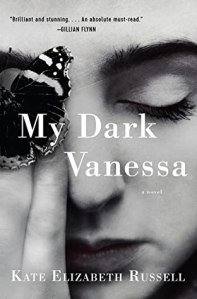 My Dark Vanessa by Kate Elizabeth Russell
My Dark Vanessa by Kate Elizabeth Russell
William Morrow, March 2020. 373 pg.
A 42-year-old English teacher at a prep school in Maine grooms then rapes his 15-year-old student. Although it’s a story that ‘s been told numerous times, it’s a remarkably strong perspective that’s completely engrossing. The story alternates between 2000 and 2017 where adult Vanessa finds herself finally recognizing the level of abuse and how it’s affected her. I have a memory from high school of being in gym class and one of my classmates going up to a (very attractive) teacher and unbuttoning a button on his shirt and commenting something about the full buttoned up style. It was so bold. That was how this popular student commanded attention. I didn’t even kiss a boy until college. Vanessa is incredibly naïve as a student: “It wasn’t about how young I was, not for him. Above everything else, he loved my mind. He said I had genius-level emotional intelligence and that I wrote like a prodigy, that he could talk to me, confide in me. Lurking deep within me, he said, was a dark romanticism, the same kind he saw within himself. No one had ever understood that dark part of him until I came along.” Vanessa writes poetry. Mr.. Strane gives her Sylvia Plath, Emily Dickinson, Edna St. Vincent Millay to read and then he gives her Lolita. As an adult, Vanessa recognizes: “I still feel different from others, dark and deeply bad, same as I did at fifteen, but I’ve tried to gain a better understanding of the reasons. I”ve become an expert on the age-gap trope, consuming books, films, anything featuring a romance between an adult and legal child. I search endlessly for myself but never find anything truly accurate.” She’s also finding it difficult to have relationships with me. She notes: “There are men who never turn into boyfriends, who peer behind the curtain and see the mess of me–literal and figurative: the apartment with a narrow path through the clothes and trash leading from bed to bathroom; the drinking, endless drinking; the blackout sex and nightmares.”
 Afterlife by Julia Alvarez
Afterlife by Julia Alvarez
Algonquin, April 2020. 256 pg.
Antonia is a recently widowed, retired English teacher who lives in Vermont. One night she arrives home to find an undocumented pregnant teenager on her doorstep. Then, her sister, who suffers with Bipolar disorder, goes missing. “You’re the most American of us, her sisters have commented to Antonia in an accusatory tone. Just saying, they said smugly when she asked what was wrong with being whoever she was. Admittedly, she was the worrier, the insomniac, the most anxious and disciplined of the sisters.” Through gorgeous prose and astute observations, Julia Avarez examines a woman’s struggles to maintain her individual identity as well as to navigate relationships with her three sisters and her immigrant community.
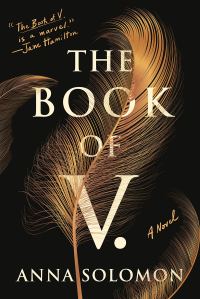 The Book of V by Anna Solomon
The Book of V by Anna Solomon
Henry Holt & Company, May 2020, 320 pg.
I gasped excitedly when I walked into the break room at my bookstore job and saw the ARC of this novel. I tore through this book in two days. Leaving Lucy Pear is one of my favorite novels and now after reading this I’ll count Anna Solomon as a favorite author. This novel focuses on three Jewish women– Lily is a mother, second wife and writer in 2016. Vivian is a political wife during the Watergate-era. Esther is an independent woman in ancient Persia. They’re all strong, independent-minded women. and Solomon fully explores each character’s motivations, desires, needs, struggles, commonalities and connections across the centuries.
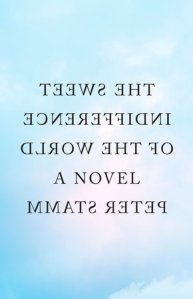 The Sweet Indifference of the World by Peter Stamm
The Sweet Indifference of the World by Peter Stamm
Other Press, January 2020. 160 pg.
I only read one book by a white male author and this is it. I have a handful of favorite cis white male authors and Peter Stamm counts as one of them. I read them immediately. I appreciate his gorgeous, melancholy writing. This one is short and interesting– a writer, Christoph, meets a woman, Lena, who is the doppelganger of his former lover, Magdalena, who inspired his first novel post breakup. Lena recognizes her own relationship with a writer named Chris in the story she’s told. This one blurs past and present, fiction and reality. How much does reality influence fiction and fiction influence reality? He comments: “With youthful pathos, I had believed I had to decide between her and my writing, between freedom and love. Only now did I understand that love and freedom were not mutually exclusive, but mutually entailed: the one wasn’t possible without the other.”
book review: Agnes
Posted by Amy Steele in Books on November 4, 2019
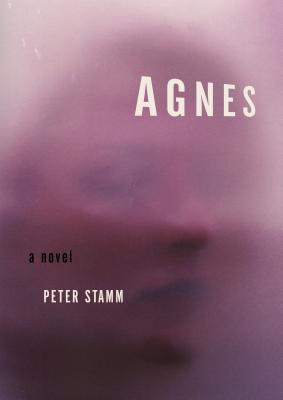 Agnes by Peter Stamm. Other Press| September 2019| 160 pages | $14.99| ISBN: 9781590511534
Agnes by Peter Stamm. Other Press| September 2019| 160 pages | $14.99| ISBN: 9781590511534
RATING: ****/5*
Agnes is the story of a romance. A writer writes the story of his relationship with Agnes, a PhD candidate. It becomes unclear what’s real and what’s fiction. Life completely imitates art. He writes: “In my head, our relationship was already much further advanced than it was in reality. I was already wondering about her, beginning to have my doubts, though we hadn’t even been out together.” Soon enough his writing changes the relationship as Agnes follows in the footsteps of her fictional counterpart. The author crafts exactly what he wants to happen. It’s the power of the pen in full. If he wanted her to dress a certain way for an upcoming event, he’d write about it.
He writes: “Now Agnes was my creation. I felt the new freedom lend wings to my imagination. I planned her future for her, the way a father would plan his daughter’s.” Do they really care about each other or is this writing now solely interested in writing the perfect character and story? Writers possess the power to change circumstances and create narratives. The writer begins to become more focused on writing about the relationship than actually being in the relationship. He writes: “I wasn’t daydreaming. I was fully in control, and everything I thought to myself instantly became real. It was a feeling like walking along a narrow gorge that I couldn’t leave. And if I tried to, I felt a kind of resistance, the presence of another will, some sort of elastic fetters that kept me from setting off in the wrong direction.” It’s an intriguing concept and beautifully written in this short, strong novel.
review by Amy Steele
STEELE PICKS: 12 BEST FICTION BOOKS of 2014
Posted by Amy Steele in Books on December 26, 2014
1. Boy, Snow, Bird by Helen Oyeyemi [Riverhead]
clever, stunningly gorgeous novel about race.
2. The Daring Ladies of Lowell by Kate Alcott [Doubleday]
If you grew up in Massachusetts like me, you likely went on a Lowell Mill tour at some point during an elementary school or junior high field trip. I went twice because when my Aunt and cousins visited from Texas they wanted to go. While you rode on a boat along the Merrimack River listening to a guide speak about girls and young women leaving their families from all over New England to work at the Lowell mills it was easy enough to disassociate from it yet dreadful to think about the harsh conditions these women faced back in the 19th century.
Like the Salem witch trials the industrial revolution and bitter working conditions for Lowell mill girls happened essentially in my backyard and I feel particularly close to the plight of the mill girls depicted in this novel. It’s only the second five-star rating I’ve given to any book this year. Kate Alcott vibrantly brings the stories of the Lowell mill girls to the page as she creates strong, outspoken female characters enduring adverse situations that dare imagine and dispute better working and living situations.
3. Everything I Never Told You by Celeste Ng [Penguin Press]
Anything I write will never be enough to convey the power and magnificence of this debut novel.
4. Fallout by Sadie Jones [Harper]
Fallout revolves around Luke Kanowski, a young man with a mother living in a mental institution and a a former Polish POW father who remained in England after the war. Both parents rely tremendously on Luke. Living in a rustic northern town, Luke escapes the familial strain and dead-end choices through a passion for theatre. He reads everything and remains updated on all theatrical goings on. One night he meets aspiring producer Paul Driscoll and theater student Leigh Radley who will influence his future in myriad ways
5. Visible City by Tova Mirvis [Houghton Mifflin Harcourt]
Author Tova Mirvis writes with a melancholy gorgeousness about connectivity and disparity. When we imagine others’ lives we never expect what we eventually discover to be true. Perfection masks insecurities. Contentment hides dissatisfaction. What is happiness? Our ideal is never another’s ideal. How something looks from afar rarely looks as virtuous once you start to delve into the grit and imperfections.
6. Pioneer Girl by Bich Minh Nguyen [Viking]
Author Bich Minh Nguyen writes about a Vietnamese-American family and its connection to the beloved American Ingalls-Wilder family as seen through the eyes of a savvy, inquisitive young woman. Almost everyone remembers reading the Little House on the Prairie books about Laura Ingalls and watching the television show.
7. Love Me Back by Merritt Tierce [Doubleday]
One of the best novels in a while about finding your way and developing a sense-of-self in your twenties.
8. The Garden of Letters by Alyson Richman [Berkley Trade]
When I’m thinking about a novel for some time after reading it, I know it’s remarkable. Think you’ve heard all the stories about WWII. Think again. The Garden of Letters by Alyson Richman focuses on the Italian Resistance. Elodie, a young student and cello player, becomes involved in the Italian Resistance when artists and teachers at her school become targets for Mussolini’s Fascist regime.
9. Dept. of Speculation by Jenny Offill [Vintage]
impressively creative.
10. All Days are Night by Peter Stamm [Other Press]
A popular television news reporter wakes up severely disfigured by a car accident. The novel beautifully traverses past and present. Stamm writes in an effectively laconic and melancholy style. He’s exploring appearances from various angles. It’s a gripping read about art and connection.
11. Life Drawing by Robin Black [Random House]
stunning writing. brilliantly explores marriage in all its nuances.
12. The Boston Girl by Anita Diamant [Scribner]
This is the story of the education of Addie Baum. Jewish daughter to immigrant parents Addie grew up during the mid-1900s in a one-room tenement house in Boston. In telling Addie’s story, author Anita Diamant covers a lot of history: prohibition; 1920s flappers and artists; WWI; The Great Depression; illegal abortions, birth control and Margaret Sanger; the Spanish Flu; women’s education; women’s careers; journalism; civil rights. Like The Red Tent, Diamant depicts history through a feminist eye. Intelligent, resourceful and intellectually-curious Addie is a wonderful feminist character. I probably truly fell in love with this novel when Diamant mentioned Simmons College, my women’s college alma mater in Boston. At one point, Addie discusses her goal to attend college but that she fears many won’t accept her because she’s Jewish. [“There’s Simmons College,” I said. “They even accept the Irish if you can imagine.”]
book review: All Days are Night
Posted by Amy Steele in Books on November 17, 2014
<em>All Days are Night</em> by Peter Stamm. Publisher: Other Press [November 2014]. Fiction. Hardcover. 192 pages.
A popular television reporter, Gillian, wakes up in the hospital to a disfigured face and a dead husband. Matthias, her husband, drove the car drunk, hit a deer and caused the couple to crash. She lost her beautiful visage and through numerous surgeries she’ll get a face back that was never hers. “It’s relatively straightforward to put an ear back, said the doctor, but a nose has a great many delicate blood vessels. We are going to have to build you a new one,” the doctor, hand mirror in his grip tells Gillian. “It doesn’t look very pretty at the moment, he said, but I still think it’s a good idea for you to take a look at it.”
She’s lost her identity. We’re all completely connected to our faces and bodies no matter what we think or desire. It’s a visual world. For some more than others. Gillian must deal with this loss and reconcile with whatever the surgeons reconstruct. Even her parents can barely deal with the new reality. Her mother can’t even look at her. Reminds me of the facial transplants completed at Brigham and Women’s Hospital. Final result: not exactly you and not exactly the donor.
“Her life before the accident had been one long performance. Her job, the studio, the designer clothes, the trips to cities, the meals in good restaurants, the visits to her parents and Matthias’s mother. It must have been a lie if it was so easy to destroy with a moment’s inattention, a false move. The accident was bound to happen sooner or later, whether in the form of a sudden catastrophe or a gradual unraveling, it was coming.”
Not only does she have to deal with reconstructive surgeries but career loss. To rebuild, Gillian escapes both the city and the tragedy. She heads to her parents’ isolated vacation home in the mountains. Gillian encounters an artist, Hubert, from her past that may or may not feature into her future. The fight between Gillian and Matthias occurred because Matthias found naked photos of Gillian that Hubert— an interview subject– took. Matthias drank too much at a party the couple attended and despite their friends’ concerns he insisted on driving. German author Peter Stamm revisits the encounters between Gillian and Hubert that caused tension between Gillian and her late husband.
As a cultural reporter, Gillian dipped into the arts and music scenes. An intriguing world combined with an electrifying profession. Hubert is a fame-fueled artist. Neither Gillian nor Hubert is terribly sympathetic. However they are both relatable and intriguing. Losing one’s looks, one’s face, one’s identity in that manner. A ghastly, unimaginable thought. What would you do? How would you cope?
The novel beautifully traverses past and present. Stamm writes in an effectively laconic and melancholy style. He’s exploring appearances from various angles. It’s a gripping read about art and connection.
RATING: *****/5
–review by Amy Steele
<em>FTC Disclosure: I received this book for review from Other Press.</em>
purchase at Amazon: All Days Are Night








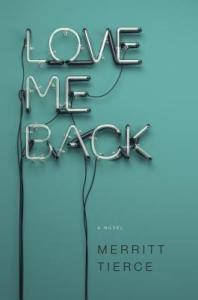












You must be logged in to post a comment.